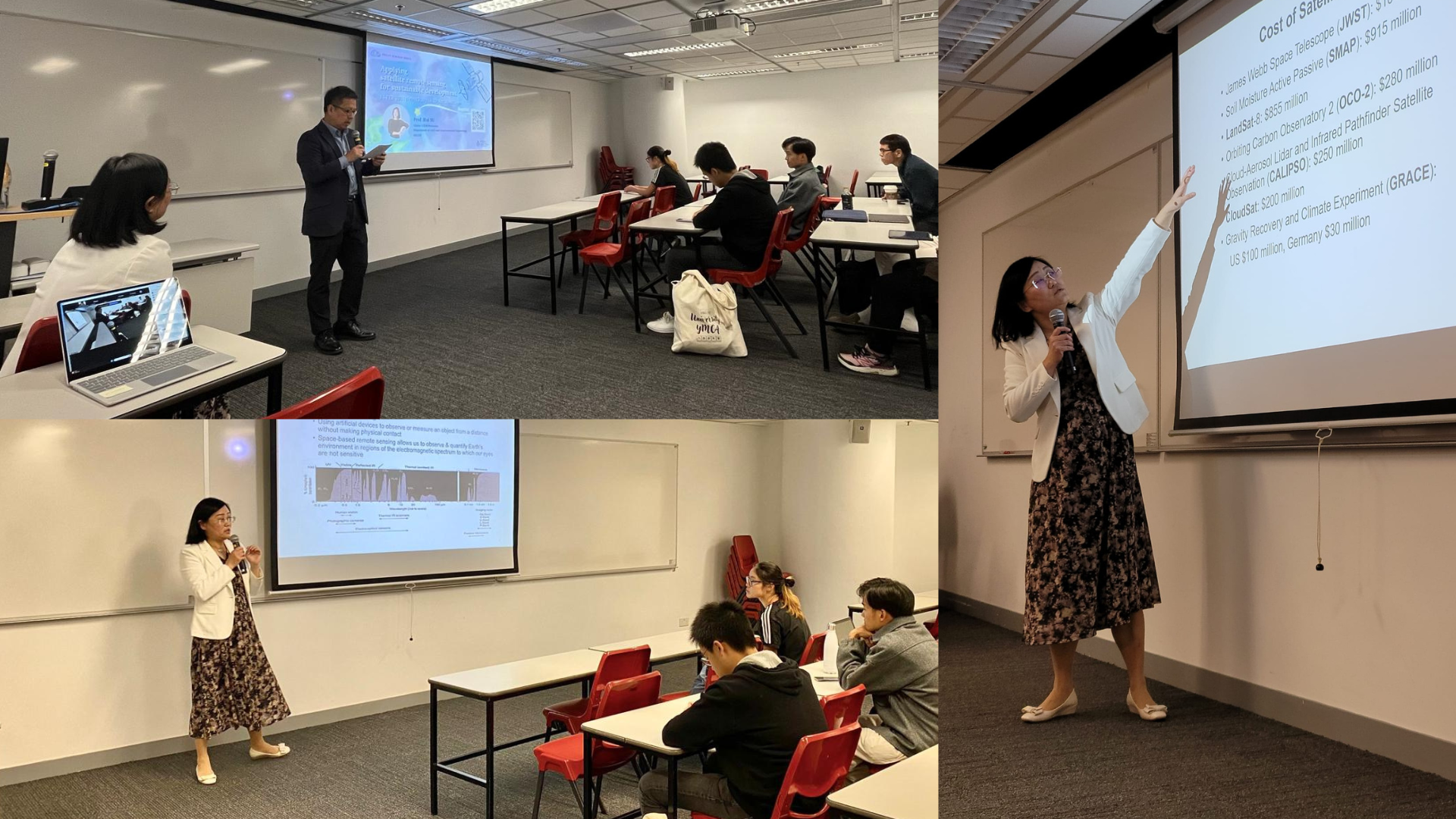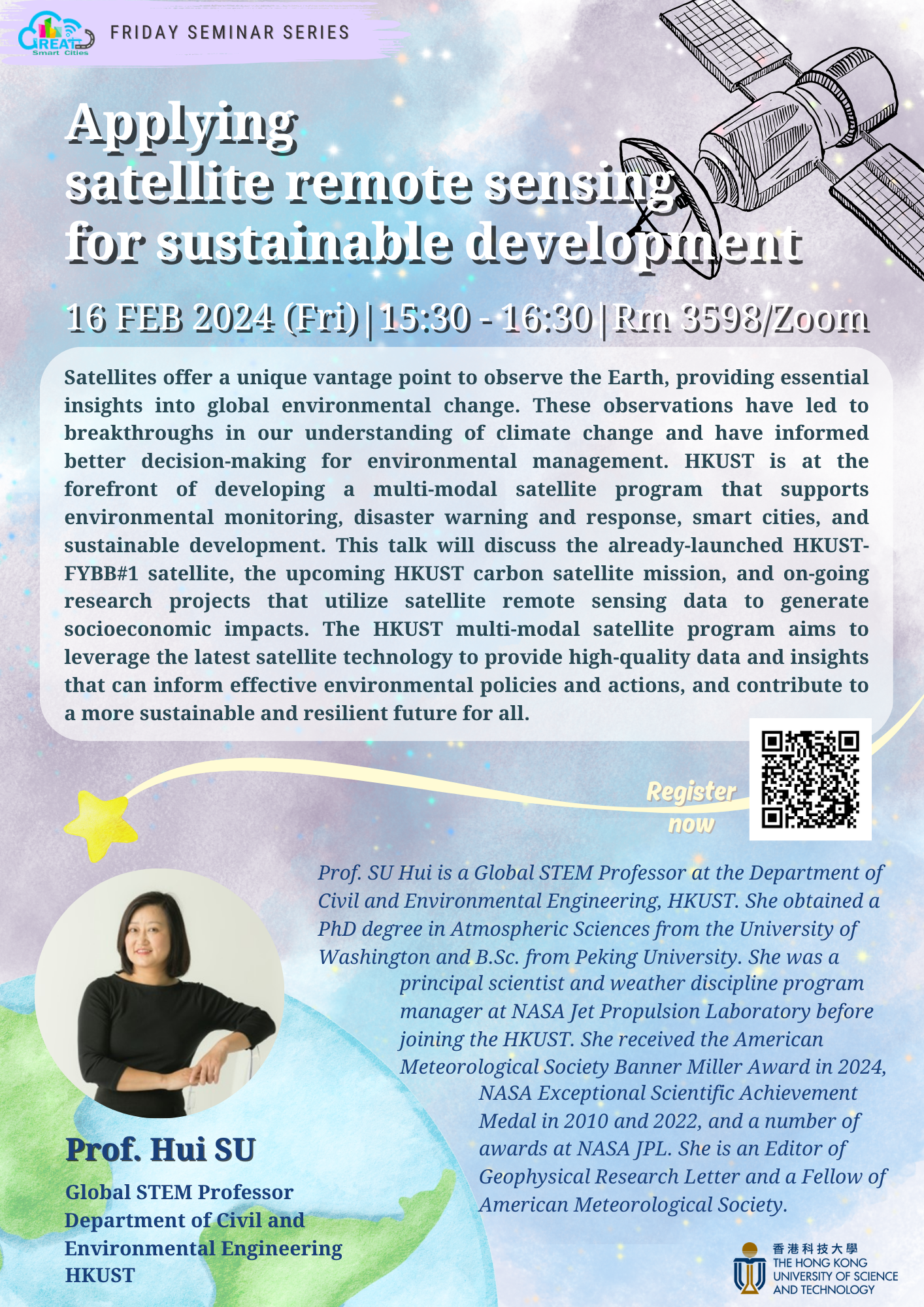FRIDAY SEMINAR SERIES
Applying satellite remote sensing for sustainable development
16 Feb 2024 (Fri)
Prof. Hui SU
Global STEM Professor, Department of Civil and Environmental Engineering, HKUST
HIGHLIGHTS AND RECAP
Harnessing the Power of Remote Sensing
Did you know that we can observe and measure objects from a distance without physical contact? It's all thanks to remote sensing using artificial devices!
In this Friday Seminar, we are pleased to have Prof. Hui SU, Global STEM Professor of the Department of Civil and Environmental Engineering at HKUST, to share her views on how the latest advancements in satellite technology. We delved into the fascinating world of remote sensing and its applications. From passive to active sensing, we explored how it helps us measure CO2 levels, monitor environmental changes, and even aid in urban planning.
One exciting project we discussed involved using microwave technology to measure rain and ice particles, contributing to smaller and lighter sensors weighing only 10 grams!
With the collection of the first batch of earth environmental monitoring remote sensing data by "HKUST-FYBB#1" satellite, which boasts a high-resolution (0.5m) capability, both HKUST and Chang Guang will collaborate to build a multimodal remote sensing satellite constellation. Together, they aim to develop a comprehensive system for environmental monitoring and disaster forecasting, revolutionizing the way we safeguard our planet.
Thanks to the integration of AI, we're witnessing breakthroughs in understanding the Earth's climate system, empowering us to make better-informed decisions for environmental management and sustainable development.
Let's continue to explore the endless possibilities of remote sensing and work together towards a greener and smarter future!

